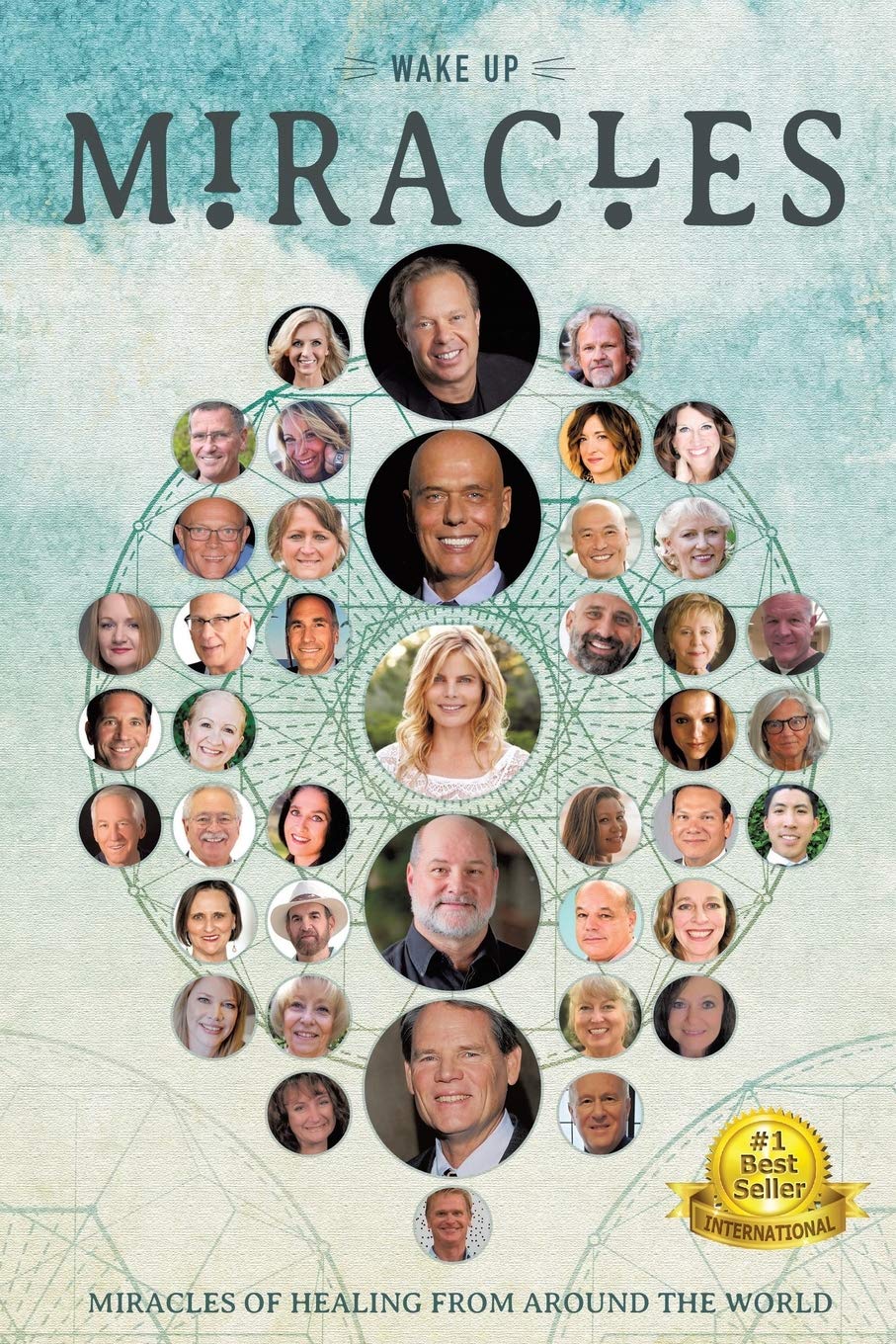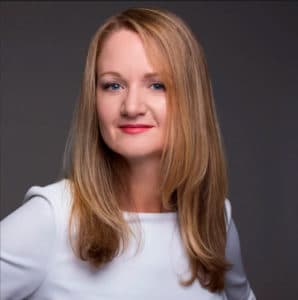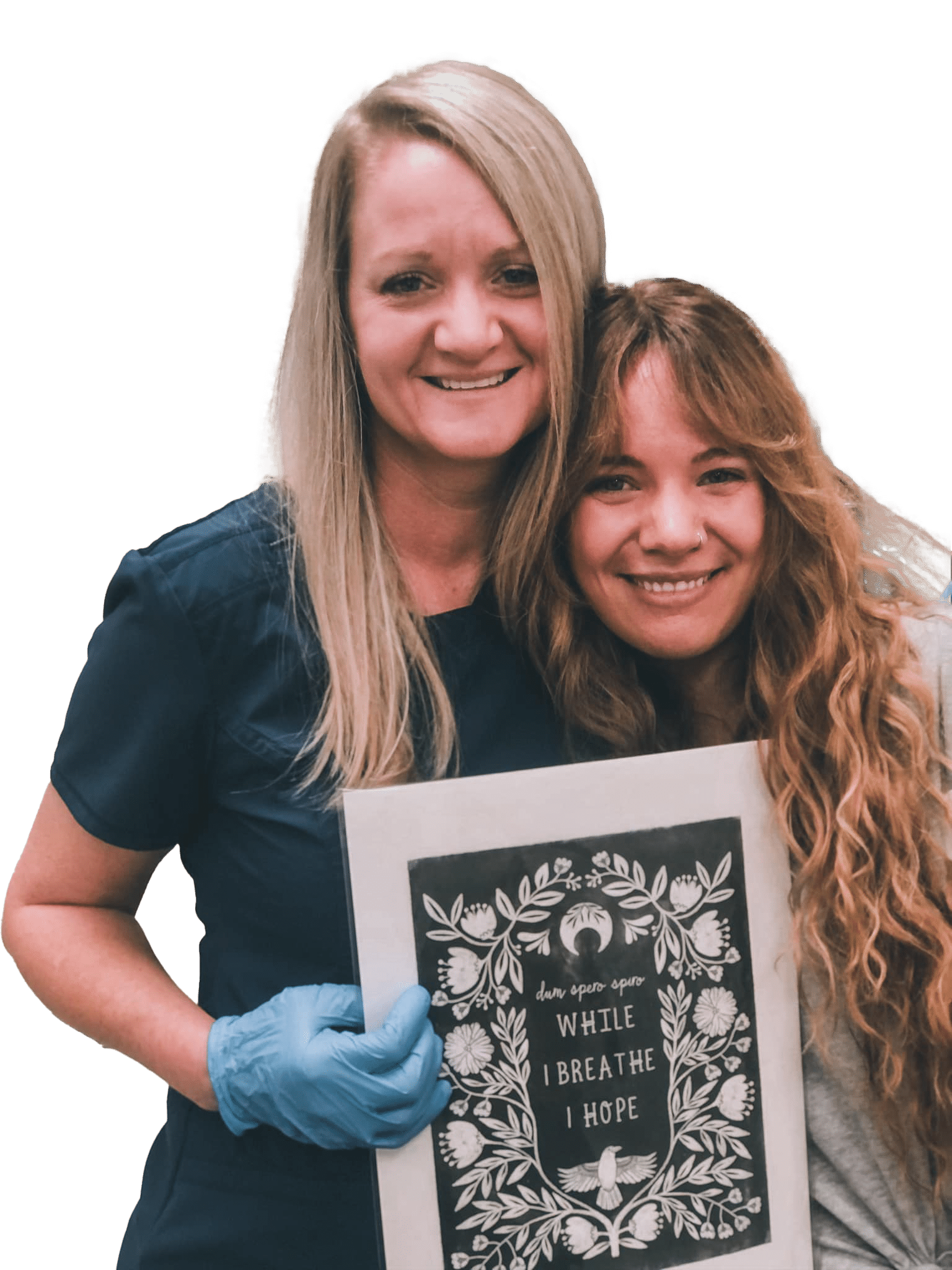The Absence of a Miracle…
In this excerpt from Dr. Katinka van der Merwe’s Miracles of Healing from Around the World, Dr. Katinka describes her inspirations, how her process for pain relief came to be, and the course of actions that led to the founding of The Spero Clinic.
Most doctors were called into healing by a moment, a miracle, a lightning rod. This moment was usually the birth of a great desire to help those who are suffering, to embrace the sick and broken, to make this world a better place.
The first 34 years of my life, I was missing my moment. As the daughter of a great chiropractor known for helping the hopeless, I was born into a life that was all I knew. My choices, I thought, were shaped by my desire to please my dad, to make him proud of me, and to live up to his expectations. I had no great reason to become a healer, other than wanting to follow in my father’s footsteps. I was missing the “why.”
After graduation in Dallas in 2000, I joined my newly immigrated family in the beautiful Fayetteville, Arkansas. My dad had recently set out in practice on his own again. My family was full of hardworking people, shaped by forefathers familiar with being adrift on a strange continent, and carving out a new way of life.
I spent the first eight years of my career steeped in misery, knowing that I lacked passion, that I was a going through the motions, an imposter. I did not love my work and knew that I was merely surviving professionally. I was missing the magic that breathes fire into every fulfilling career.
Nevertheless, I labored on. My family was embraced by the tight knit community hugged by green hills and lakes, where people still brought you fresh vegetables from their gardens, and everyone knew most everyone else. I questioned my life’s choices. Saddled by crippling student loans and my dad’s pride in working next to me, I carried on.
One Saturday, 11 years ago, I received a fateful phone call. “Can you come to the hospital? Tommy was hurt. It is bad.” Tommy van Zandt was an ex-Texan, a successful local commercial realtor, a businessman, and a family man of two teenage boys and lovely wife – both patients of mine.
Tommy was in the prime of his life. He was handsome, charismatic, and beloved by our community. That morning, Tommy had climbed up a 16-foot ladder in his backyard to cut down a branch off of a tree that had been killed by a crippling ice storm our area had recently suffered. The branch came loose, knocking Tommy off the ladder onto his back.
The fall had crushed Tommy’s cervical spine, leaving him unable to breathe. Robyn, his wife, had found him in the nick of time, able to call 911 and save his life. Tommy was put in ICU here in Fayetteville. Tommy’s family was scared and desperate. They had hope that somehow, alternative care would succeed where allopathic medicine had reached its limits. At the time, the neurosurgeon that was treating Tommy was a patient of my dad, and I was allowed to go treat him in ICU.
It was a sunny afternoon when I found myself standing next to Tommy’s bed, surrounded by his family. This strong, dynamic human being was hooked up to breathing equipment and sedated. I looked at that beautiful family surrounding me, hoping that somehow, I could provide the miracle they were aching for. I have never in my unsatisfying career thus far felt more powerless, more impotent, more hopeless.
The miracle I would have loved to give Tommy did not come through me that day. I left the hospital, made it to my car and cried like a baby. I cried for my helplessness and I cried because not so deep down, I felt powerless.
I would go on and treat Tommy for months afterward. I treated him at Craig Rehab in Denver and eventually at home. He would require a team of caregivers from thereon out. He had lost the ability to walk, move from the head down, feed himself, and breathe on his own. His injury was catastrophic and life-altering, the stuff of which nightmares are made.
You may ask yourself, when speaking about miracles, what this story has to contribute. You see, miracles, I have learned, are not always instant moments, magically giving us the outcomes we long for from the depths of our souls.
Miracles may take weeks, months, or years. Miracles may be formed purposely by our hard work and the decision and determination to change. They may be born in the moment when we hit rock bottom.
Tommy was my rock bottom. Up until Tommy, I was just going through the motions in my career. I believed I lacked that X-factor that turned ordinary doctors into great healers. Tommy was my watershed moment. I could have given up, but somehow, that experience became the spark that lit my passion.
I understood that the human body had limits, and sometimes, even the best healers could not overcome physical limitations. Sometimes, the body is just too broken to fix. More often than not though, there is hope. I understood this philosophy. My very upbringing had trained me to believe in the body’s miraculous, innate ability to heal itself.
However, I had not allowed myself to learn as much as I could. There were techniques, technologies, and methods in the world that I had not examined. I was operating below my full potential while I was surrounded by tens of thousands of Tommys and untold suffering while I denied, questioned, and forgot my calling to heal the broken and suffering.
I changed and became obsessed with opening my heart and mind to learning. I made a deal with the Universe that if knowledge was sent to me, I would open myself to learning and serving. I spent weekends traveling every corner of the world, learning from those treating some of the most helpless cases across the globe.
I vowed that when my next Tommy came, I would be ready. I was thirsty for knowledge and open to learning. I found mentors who believed in me and who were willing to guide me. I knew my moment would come, that something great would happen. The seed had been sown and it was being fertilized. I waited for what would grow.
One ordinary Tuesday in practice, I met Carlos. He suffered from Complex Regional Pain Syndrome (CRPS), a nervous system disorder of unknown origin. CRPS is a condition that starts after a seemingly innocent enough injury, such as (even simple) surgeries, fractures, or something as simple as a needle stick.
CRPS causes immeasurable, devastating pain. Patients describe the pain associated with CRPS as worse than childbirth. As if that is not bad enough, CRPS may spread, eventually consuming the body inside and out. There is no medical cure for CRPS.
It is known as one of the “suicide diseases,” and for good reason. The first thing a newly diagnosed patient typically does upon receiving a diagnosis is research this condition on the internet, only to discover that there is no cure, no way out of the daily hell of burning pain. Eventually, it often breaks the spirit of even the most courageous of patients. Death may seem like the only way out for many.
Traditionally, CRPS is managed through nerve blocks, ketamine treatments (a strong tranquilizer used for animals such as horses), opioids, Fentanyl patches and spinal cord stimulators implanted next to the spinal cord. In Carlos’s case, it had progressed and attacked his gastrointestinal tract, causing burning pain every time he tried to eat.
When I met Carlos, he was forced to give up his career as a police officer because of his illness. He had lost 60 pounds and his pain was out of any medical control. He had gone through all the standard treatments for CRPS, all providing no real relief.
Carlos was accompanied by his wife that day, holding their nine-month old baby boy, Sean. Carlos was in severe pain, his head down and skin drained of all color. The whole time I was taking his medical history, his wife was his voice. Carlos was sitting with his head down, in too much pain to speak. He had been in countless medical offices before. To him, I was just the next in a long line of doctors who could not help him and did not understand. His wife, Tonya, told me that she feared for his life. Carlos had lost the will to live.
Carlos that day reminded me of one of my favorite poems by William Yeats, “Sailing to Byzantium.” It goes: “An aged man is but a paltry thing, a tattered coat upon a stick, unless soul clap its hands and sing.” Carlos had ceased to live, although he was alive.
Carlos’s wife, however, was not ready to let him go. She had begged him to try one more time, to not give up, to fight for their son. Carlos just wanted the pain to stop. Any other aspiration and ambition no longer mattered.
He had gone from living to surviving poorly, minute by minute. He had exhausted his medical options. I carefully took down his medical history. The whole time I thought, “This is it. This is it! This is the kind of misery I was born to relieve.” Finally, Carlos looked up, directly into my eyes. His face was haunted. “I don’t believe you can help me. I am here for my wife.” His words were honest and direct.
My heart stopped. What if I could not help him? I stepped into our break room, doubt coursing through me. I had been preparing for this moment, and now I was petrified. My dad happened to be there. As always, I turned to him for advice. “What if I can’t help this man?” His reply was simple: “What if you can?”
I treated Carlos that day with a simple technique designed to improve vagus nerve function. Logically, I thought that it was a good fit for his condition. If the vagus nerve was once again communicating, it could, in theory, decrease his inflammation and therefore decrease his pain. However, I had no idea if it would work. My efforts seemed too small to make a dent in his misery.
Carlos left; his pain decreased. He went to a restaurant and ate a full meal, causing him no pain. The next day, he returned, his color improved, and his pain dramatically decreased. On Carlos’s face I saw the birth of hope. I have since learned that hope is the most powerful ingredient in any healing process. The moment you restore hope, all else becomes possible. I had gained his trust.
Carlos completed his treatment 12 weeks later, all his pain gone. He was a different human being than the one who first walked into my office. I was addicted. Being part of his miracle was the single most thrilling moment of my life. I had found my calling. I became obsessed with helping those patients who could not find help anywhere else, and I vowed that I would bring my skills to others who suffered. Today, nine years later, Carlos is still in remission. Carlos went on to become a youth minister, helping many others who feel hopeless and who have reached rock bottom. Carlos’s family got him back, happy and whole, the man he was supposed to be. His son (now 10) is growing up with a father, his wife with a husband.
Carlos woke something up in my soul. Through him, I had found my purpose and true North. I believed that if I built it, they would come, and come, they did. Patients trickled in at first. We were a small clinic and our voice back then was quiet.
Our message, however, was powerful and resonated with patients who have been given up on. Our success stories were accumulated, and word started spreading. It is impossible to measure the value of the lives saved by our system, but what is clear is that the positivity of each recovery circles out and touches the lives of loved ones, friends, and communities.
Each story is unique. There was Romeo, a 12-year-old boy from Australia who begged his mom one night to get their gun and end it all. Today, Romeo is once again a normal 13-year-old boy.
There was Victorine, the volleyball player from Belgium, on crutches for five years and unwilling to continue on in pain. Currently, Victorine is once again back on the court, two years CRPS-free.
There was Philip, who would recover from CRPS and go on to form The Burning Limb Foundation, a non-profit organization designed to fund care not covered by insurance for others in pain. Every story was unique and remarkable, each patient success a miracle.
Since Carlos, I have treated more than 400 patients who suffer from conditions like CRPS, Ehlers Danlos Syndrome (EDS) and other incurable nerve pain. I grew from a staff of three to a staff of 20; every member of my team plucked from all walks of life.
My number one criteria when selecting staff was compassion for those who suffer and passion for their work. Everything else can be taught. My team is just as driven as I am, and we are making waves in healthcare, capturing the attention of the media and other doctors from all over the world.
Our formula to reach the suffering is simple: tell our story simply and show our miracles. We post every breakthrough on social media, documenting patient progress from the moment a patient comes through our door in a wheelchair to the moment they can run again without pain.
People are resonating with our message of hope. Pain should not simply be managed by chemicals or implanted medical devices. Pain should not be accepted. No one should just be given up on. The body is intelligent and magnificent, often capable of healing the most traumatic of injuries, if given the correct support.
Our patients have now come to us from 52 different countries. Soon, we will run out of space as our waiting list is growing. In an effort to accommodate our growth we are designing a small hospital that will be named The Spero Clinic. Spero means hope in Latin. Our motto is also Latin: “Dum Spiro Spero,” meaning, “While I breathe, I hope.”
I did not give Tommy his miracle; he gave me mine. I have used the heartache and sense of hopelessness born from his case to fuel my passion. The gift of working with something you are passionate about is immeasurable, and I cannot ever thank him enough.
As for Tommy, he has touched many lives since his injury. He could have shriveled into a life of disability, and instead, Tommy has thrived and become an inspiration to many. He was featured in a book about his experience, written by his brother in-law. Tommy is again very active in the real estate world, and in an interesting twist of fate, was the realtor who found and sold me the piece of land our hospital will soon be built on. In addition, he has inspired many to go on and thrive, no matter the odds.
I am grateful every day that his life touched mine. It has taught me that our greatest sorrows carve the mold by which our greatest miracles are formed into existence.
Click here to purchase Dr. Katinka’s book “Miracles of Healing from Around the World” from Amazon!
About the Author:
Dr. Katinka van der Merwe grew up in Johannesburg, South Africa as the daughter of a successful chiropractic doctor. She followed in her father’s footsteps and graduated from Parker College of Chiropractic in 1999. She has since gained a reputation of taking on hopeless and severe patient cases and has gained international attention due to her unprecedented success rates in these cases.
She practices in Fayetteville, AR and is the CEO of The Spero Clinic (www.thesperoclinic.com). In 2018, Dr. Katinka was awarded Global Chiropractor of the Year in Atlanta, Georgia by the Masters Circle Global for her outstanding achievement in her profession.





